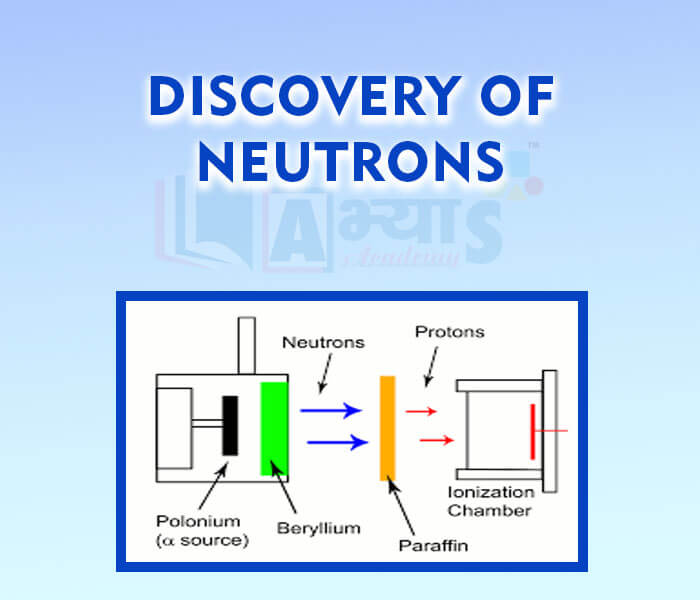Discovery of Neutrons













Discovery of Neutrons
Discovery of Neutron : The helium atom has 2 electrons and 2 protons. So, the mass of the helium atom was expected to be twice the mass of the hydrogen atom, which has 1 electron and 1 proton. But, actually the mass of the helium atom is four times that of the hydrogen atom. It was found that atoms of all the elements (except hydrogen) were at least twice as heavy as could be explained by the number of protons they had. To explain this it was predicted that other particles with no charge, but mass equal to that of a proton, must be present in all atoms except hydrogen. This prediction was proved to be correct with the discovery of the neutron.
In 1932, James Chadwick bombarded the element beryllium with alpha-particles. He observed the emission of a radiation with the following properties.
Who discovered Neutron? | |||
| Right Option : D | |||
| View Explanation | |||
Which of the following particles was discovered by James Chadwick? | |||
| Right Option : C | |||
| View Explanation | |||
What is the number of neutrons present in a nitrogen atom? | |||
| Right Option : C | |||
| View Explanation | |||
Students / Parents Reviews [10]
About Abhyas metholodology the teachers are very nice and hardworking toward students.The Centre Head Mrs Anu Sethi is also a brilliant teacher.Abhyas has taught me how to overcome problems and has always taken my doubts and suppoeted me.

Shreya Shrivastava
8thBeing a parent, I saw my daughter improvement in her studies by seeing a good result in all day to day compititive exam TMO, NSO, IEO etc and as well as studies. I have got a fruitful result from my daughter.

Prisha Gupta
8thA marvelous experience with Abhyas. I am glad to share that my ward has achieved more than enough at the Ambala ABHYAS centre. Years have passed on and more and more he has gained. May the centre flourish and develop day by day by the grace of God.

Archit Segal
7thMy experience with Abhyas is very good. I have learnt many things here like vedic maths and reasoning also. Teachers here first take our doubts and then there are assignments to verify our weak points.

Shivam Rana
7thMy experience was very good with Abhyas academy. I am studying here from 6th class and I am satisfied by its results in my life. I improved a lot here ahead of school syllabus.

Ayan Ghosh
8thAbhyas is a complete education Institute. Here extreme care is taken by teacher with the help of regular exam. Extra classes also conducted by the institute, if the student is weak.

Om Umang
10thMy experience with Abhyas academy is very good. I did not think that my every subject coming here will be so strong. The main thing is that the online tests had made me learn here more things.

Hiya Gupta
8thIt has a great methodology. Students here can get analysis to their test quickly.We can learn easily through PPTs and the testing methods are good. We know that where we have to practice

Barkha Arora
10thIt was good as the experience because as we had come here we had been improved in a such envirnment created here.Extra is taught which is beneficial for future.

Eshan Arora
8thOne of the best institutes to develope a child interest in studies.Provides SST and English knowledge also unlike other institutes. Teachers are co operative and friendly online tests andPPT develope practical knowledge also.
